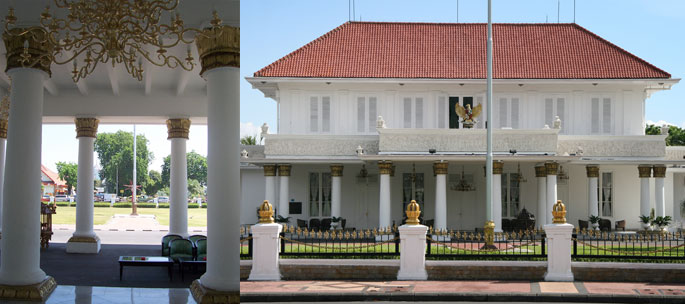Structural Construction

The Grahadi's high roof allows for increased circulation of air and for the run-off of heavy monsoon rains. The thick, solid walls insulate the interior from the heat of the sun. The inclusion of a generous number of wooden doors and tall windows provide ventilation and air circulation through the high-ceilinged halls, plus the entry of ample natural light.
Despite these design features, however, Dutch Colonial Buildings in the day before electricity , were reportedly airless, dank in the rainy season and made gloomy with heavy furnishings and excessive dark timberwork. Teak wood is used to frame the doors and windows and to suport the structure of the ground and upper floors. Teak head also been used for the magnificent main staircase which remain in its orginal, perfect condition.
Anotable remnant of the colonial period furnishings is the deks in the Governor's study. The building also has terrace on the frontside. The roof of the fašade is sustained by a colonade of pillars in Roman/Greek style.
Prev








